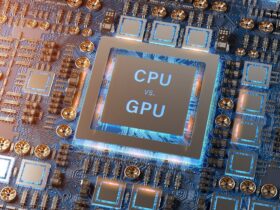Daftar Isi
In the relentless pursuit of faster computing, multithreading has emerged as a critical technique. As our applications demand more performance, traditional single-threaded execution falls short. Enter the Simultaneous and Heterogeneous Multithreading (SHMT)—a groundbreaking approach that could revolutionize how CPUs, GPUs, and AI accelerators collaborate. In this article, we explore the promise of SHMT, its implications for energy efficiency, and the challenges it presents.
The Birth of New Multithreading Technique: SHMT
A Paradigm Shift
In the realm of modern processors, simultaneous multithreading (SMT) has long been a driving force behind enhanced performance. By splitting a CPU core into multiple threads, SMT facilitates parallel execution of instructions, leading to faster processing speeds and improved efficiency. However, a new innovation is on the horizon, poised to revolutionize the way we approach computing: Simultaneous Heterogeneous Multithreading (SHMT).
What sets SHMT apart is its ability to transcend traditional boundaries, seamlessly integrating not only the CPU but also the graphics and AI processors. It’s akin to conducting a symphony, where each component plays its unique instrument, working in perfect harmony to create a masterpiece of computing prowess.
Optimizing Collaborations
Unlike its predecessor, which focused solely on parallelizing CPU tasks, SHMT optimizes the collaboration between diverse processing units, maximizing their individual strengths and capabilities. This innovative approach marks a departure from conventional computing paradigms, where CPUs, GPUs, and AI accelerators operate in isolation, each handling distinct workloads.
With SHMT, the possibilities are limitless. Picture a scenario where complex computational tasks are effortlessly divided among multiple processing units, with the CPU handling traditional computing tasks, the GPU tackling graphics-intensive operations, and the AI accelerator powering machine learning algorithms—all working in tandem to deliver unprecedented performance and efficiency.
Future Beyond
By harnessing the collective power of heterogeneous processing units, SHMT promises to usher in a new era of computing, where tasks once thought impossible become routine. Whether it’s powering immersive gaming experiences, accelerating scientific research, or revolutionizing artificial intelligence, SHMT represents a paradigm shift in the way we approach computing, unlocking new levels of performance and productivity for users across the globe.
Read More: NVIDIA RTX 5000 Blackwell Flagship: A Quantum Leap in Graphics Performance
The Smart Scheduler
QAWS Scheduler
At the core of Simultaneous Heterogeneous Multithreading (SHMT) lies the groundbreaking “smart quality-aware work-stealing (QAWS) scheduler.” This innovative scheduler dynamically allocates tasks based on their specific requirements, ensuring optimal performance and efficiency across diverse processing units.
With SHMT, high-precision tasks are intelligently directed to the CPU, leveraging its processing power and accuracy, while less critical workloads are efficiently handled by the AI accelerator. Moreover, in instances where one component falls behind, the QAWS scheduler seamlessly redistributes tasks in real time, maintaining smooth operation and maximizing overall system performance.
Resulting in Remarkable Improvement
The remarkable results speak for themselves—a remarkable 95% increase in performance coupled with an impressive 51% reduction in power usage compared to existing techniques. Early trials conducted on Nvidia’s Jetson Nano board demonstrated the remarkable efficiency of SHMT, showcasing its potential to revolutionize computing as we know it.
However, there is a caveat to consider—the role of the programmer. While SHMT presents a significant leap forward in hardware innovation, its full potential can only be realized through algorithmic parallelism. Developers must adapt to this new paradigm, either by leveraging existing tools or by creating new ones to harness the capabilities of SHMT effectively.
Undeniable Promise
Yet, despite this initial hurdle, the promise of SHMT is undeniable. If the tech community embraces and rallies behind this groundbreaking technology, we could witness the dawn of a new era in computing—where blazing-fast, energy-efficient performance becomes the new standard. With SHMT leading the way, the possibilities for innovation and advancement are truly limitless.
In conclusion, SHMT promises to double processing speeds while consuming less energy. As we navigate this paradigm shift, collaboration between researchers, programmers, and hardware manufacturers becomes paramount. The future of multithreading lies not in isolation but in harmonious orchestration—a symphony of cores, GPUs, and accelerators working together to redefine what’s possible.
































